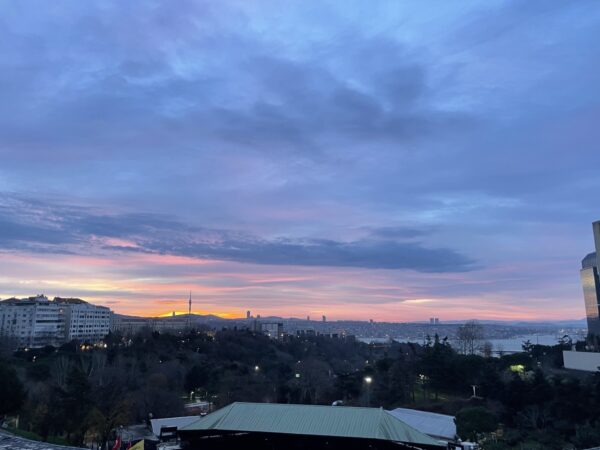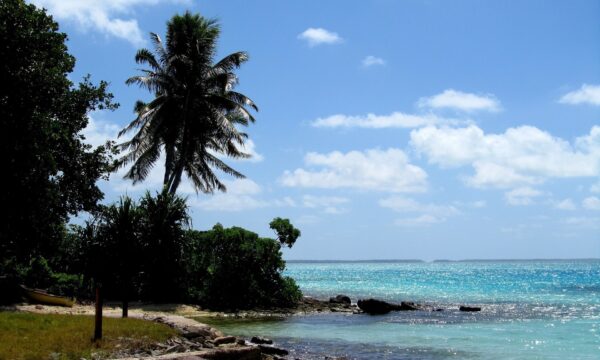
Alex's research revolves around strong climate mitigation pathways and the physical implications of further delaying global decarbonisation efforts. While his core expertise is based on the physical science of climate change, he also works on facilitating the way scientific information is compiled and communicated to stakeholders and policy makers.
Alex studied Geography at Humboldt University in Berlin and Climate Science at University of Bern. For his PhD project at the Australian-German Climate and Energy College in Melbourne, he synthesised knowledge about multi-centennial sea level projections and developed a sea level rise module for the simple climate carbon cycle model MAGICC. As a Melbourne University research fellow, he contributed to the Coupled Model Intercomparison Project Phase 6 (CMIP6) effort and continues to be involved in the MAGICC development process. Before starting his PhD, he worked at the Intergovernmental Panel on Climate Change (IPCC) Working Group I Technical Support Unit during the Fifth Assessment cycle.
Publications
- Dhame, S.D., Young, D.Y., Rosen, D.R., Klönne, U.K., Nauels, A.N., Zuniga, C.Z., Kellou, D.K., Hare, B.H. Solar geoengineering: a note to inform discussions on physical climate impacts, risks and governance issues. (2024)
- Martyr, Saeed, Klönne, Nauels, Rosen, Schleussner. The 1.5°C limit and risks of overshoot. (2024)
- Martyr. Le seuil de +1,5°C et le risque de dépassement de ce seuil
- Kellou, Nauels, Klönne. Climate impacts in northern forests. (2024)
- Baur, S., Nauels, A., Nicholls, Z., Sanderson, B.M., Schleussner, C-F. The deployment length of solar radiation modification: an interplay of mitigation, net-negative emissions and climate uncertainty. Earth System Dynamics. 14 https://doi.org/10.5194/esd-14-367-2023
- Kellou, D., Nauels, A., Klönne, U., Schleussner, C-F., Hare, B. Solar radiation modification: a dangerous distraction from required emissions reductions. (2023)
- Ganti, G., Gidden, M., Smith, C., Fyson, C., Nauels, A., Riahi, K., Schleussner, C-F. Uncompensated claims to fair emission space risk putting Paris Agreement goals out of reach. Environmental Research Letters. 18 (2023) https://doi.org/10.1088/1748-9326/acb502
- Only halving emissions by 2030 can minimise risks of crossing cryosphere thresholds
- 1.5°C is still in reach to reduce the worst climate risks – but only with immediate mitigation action and shifting finance
- ZERO IN on the critical decade
- No time for complacency: without closing the 2030 gap, net zero targets cannot prevent severe climate impacts
- Responsibility of major emitters for country-level warming and extreme hot years
- ZERO IN on near-term warming and our changes of staying within 1.5°C
- Methane reductions, ‘climate neutrality’, and choosing the adequate metric for emissions accounting under the Paris Agreement
- The science of temperature overshoots: impacts, uncertainties and implications for near-term emissions reductions
- Overview briefing on the IPCC Special Report on Climate Change and Land
- Overview briefing on the IPCC Special Report on the Ocean and Cryosphere
- 1.5°C to survive: evidence from the IPCC Special Reports
- Loss and damage implications of sea-level rise on Small Island Developing States
- ZERO IN on a new generation of climate models, COVID-19 and the Paris Agreement
- The shared socio-economic pathway greenhouse gas concentrations and their extensions to 2500
- Incremental improvements of 2030 targets insufficient to achieve the Paris Agreement goals
- New models, old message: deep emission cuts in next decade are key
- Inconsistencies when applying novel metrics for emissions accounting to the Paris agreement
- A reminder for the 'Blue COP' - limiting warming to 1.5°C crucial for protecting oceans and ocean services
- Pre-2020 commitments and the need for more ambitious NDCs
- ZERO IN on the remaining carbon budget and decadal warming rates
- For climate's sake: coal-free by 2030
- Attributing long-term sea-level rise to Paris Agreement emission pledges
- Climate impacts at 1.5°C and 2°C – Results of the HAPPI DE Project Klimafolgen bei 1,5°C und 2°C
- 1.5°C Hotspots: Climate Hazards, Vulnerabilities, and Impacts
- New Zealand’s Zero Carbon Bill – getting the Paris Agreement right
- Committed sea level rise under the Paris Agreement and the legacy of delayed mitigation action
- “Because the ocean” – achieving the Paris Agreement 1.5°C temperature limit
- Linking sea level rise and socioeconomic indicators under the Shared Socioeconomic Pathways



